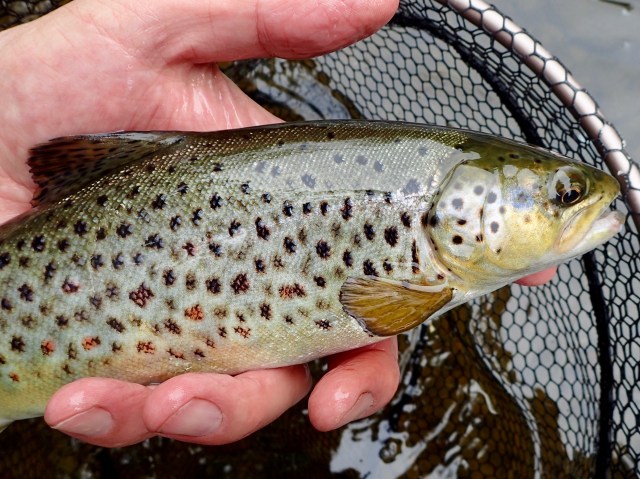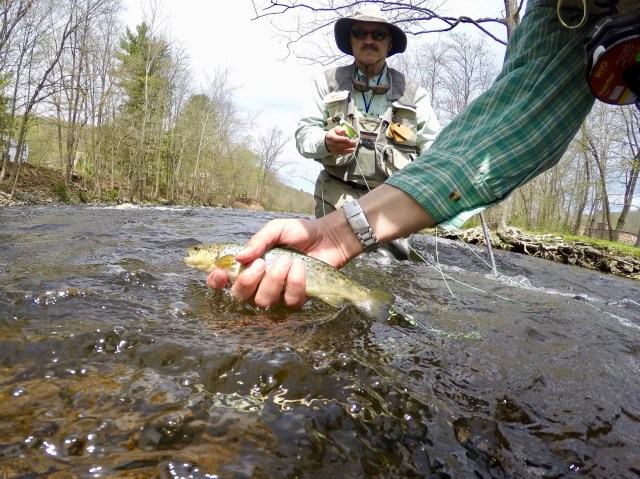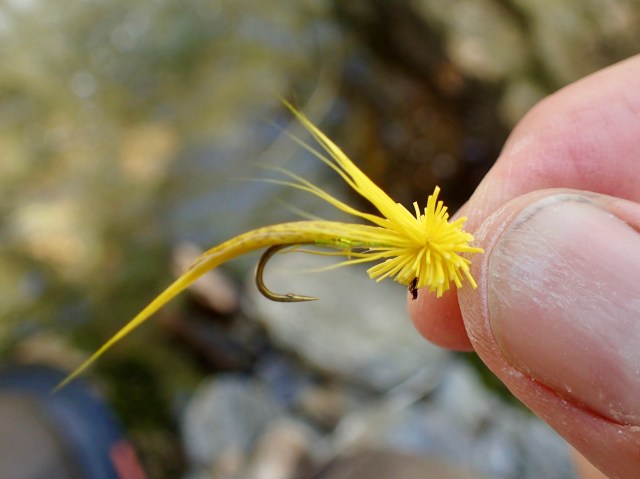What’s the best shrimp fly pattern? You could go with the philosophy of, “There ain’t no best,” and you’d get no argument from me. Or you could weigh in with the General Practitioner — and you wouldn’t be wrong.
General Practitioner = G.P. = Impressionistic shrimpy goodness.
~
Trey Combs writes in Steelhead Fly Fishing that the original prawn was tied by Colonel Esmond Drury in 1953. The General Practitioner then got really famous as a west coast winter steelhead pattern. Today there are all manner of versions and colors; this one is a variant developed by Ken Abrames as published in A Perfect Fish.
Ken introduced me to the pattern many years ago. He handed me a black G.P., and with a knowing confidence, told me to fish it as part of a three fly team. Sadly, I’ve long since lost that fly, but I still have one of Ken’s olive G.P.s. tucked away in the never-to-be fished-again archives. When tied just so, G.P.s are magical creations that bask in their impressionistic glory. Picture this fly near the surface on a greased line swing or a dead drift, easily visible to a striped bass even in the mucky outflow of a salt marsh. Wait to feel the weight of the fish — and then hang on. Stripers love shrimp, and when they are keyed on this bait, feeding on station, they will often ignore all other offerings and stripped presentations.
R.L.S. Black General Practitioner

Hook: Atlantic salmon 2-8
Antennae: Black and blue bucktail, mixed
Head: Black golden pheasant neck feather
Eyes: Golden pheasant tippet
Body: Gold flat tinsel
Ribbing: Gold oval tinsel
Hackle: Natural black
Carapace: Metallic black turkey feather
Back: Same
Tail: Same
~
A view from below. You can imagine all those hackle fibers gently quivering in the current and whispering to a striper, “I’m alive…”

~
Tying Notes: Ken called for an Eagle Claw 253, but I like the badass black of Atlantic salmon hooks. No gots turkey feathers? Me either, so I used dyed black pheasant rump. The majority of the black G.P.s I’ve seen use far too much bucktail; remember, you’re tying the antennae of a grass shrimp (the steelhead pattern calls for 10 bucktail hairs; I used 20) not an opaque jig. To form the eyes, cut a V-shape in the tippet and then lacquer with head cement. The “eye stalks” will narrow from the head cement. You don’t have to use the tinsels; gold braid works just as well. The body and top feathers are somewhat of a pain; tie in the carapace at the tail, then tie and wind the tinsel and hackle to the mid-point of the shank, tie in the back (like a little roof), continue forward with the tinsel and hackle, then tie in the tail feather, again like a little roof. Make a spiffy head and go fish.




















